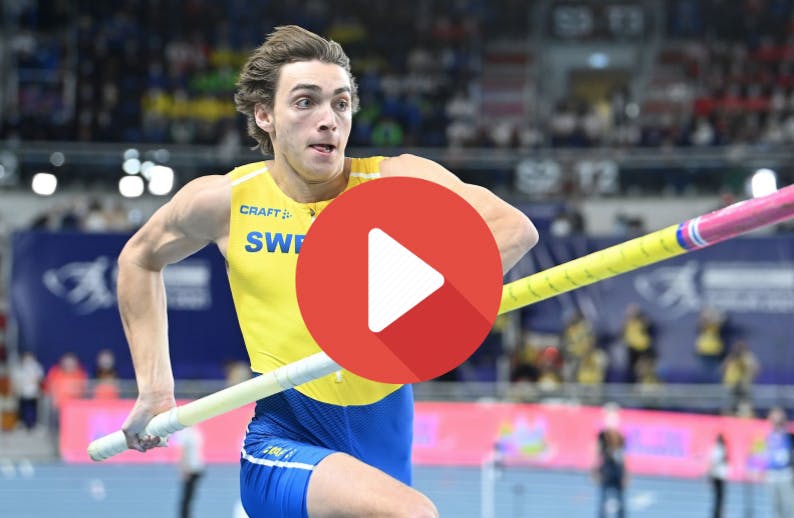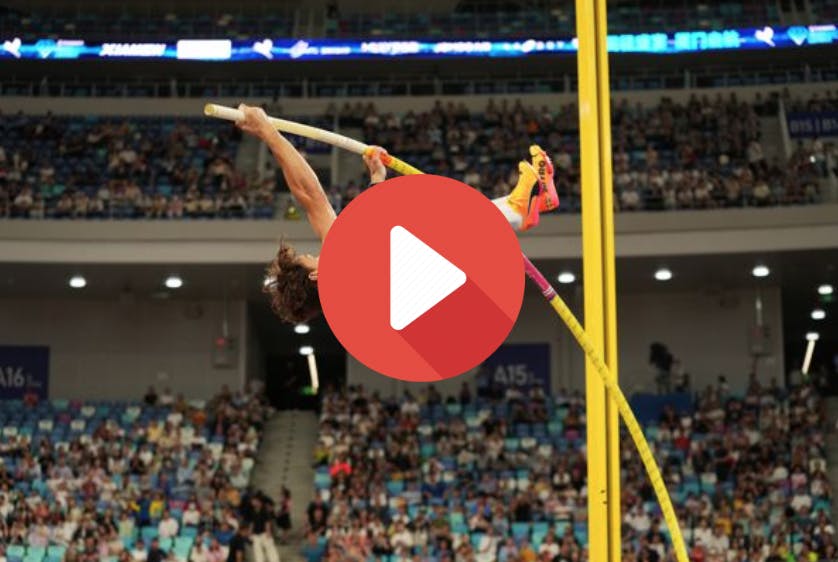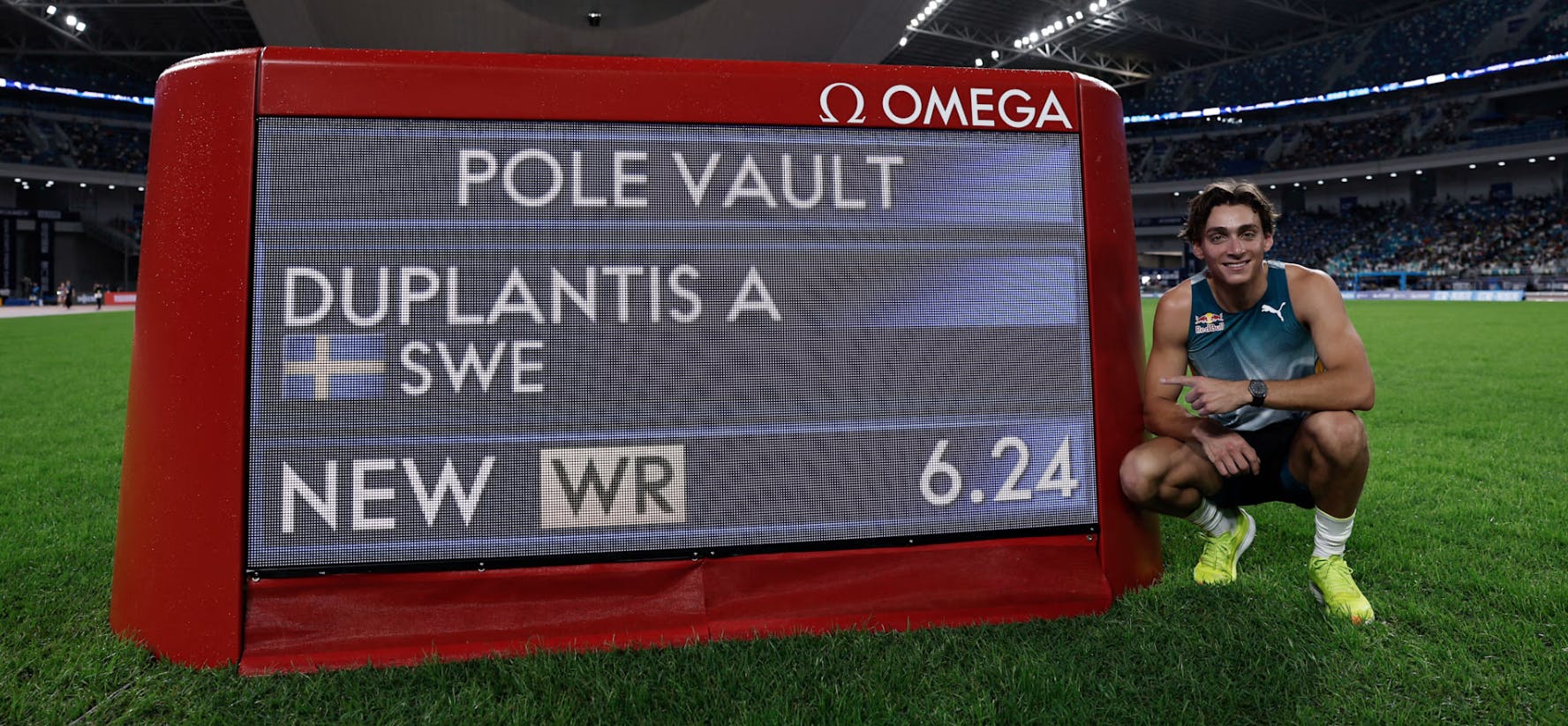The Technique Behind Mondo Duplantis' Pole Vault World Record
- By Grant Young
The Swedish pole vault phenom Armand “Mondo” Duplantis has set the track & field world by storm yet again on April 20, after he broke the men’s pole vault world record for an eighth time by clearing 6.24 meters (20 feet, 5 inches) at a Diamond League season-opening meet in Xiamen, China. This marks the second straight track & field event where the 24-year-old Olympic gold medalist has broken his own world record.
In addition to winning gold at the 2020 Tokyo Olympics, Duplantis has two World Championships (in 2022 and 2023), two world indoor championships (2022 and 2024), three Diamond League championships (2021, 2022, and 2023), and appears poised to win another gold medal at this summer’s 2024 Paris Olympics.
The athletics world is in perpetual awe of Duplantis’ exceptional skill and technique. The Swedish phenom's ability to soar to unprecedented heights is the result of years of meticulous training and a mastery of the complex biomechanics involved in this demanding event. Yet, multiple world-class track coaches have broken down some of the techniques that Duplantis has mastered in their own courses, which can help us understand exactly how Duplantis has become such a pole vault virtuoso.

Speed and Power:
At the heart of Duplantis' record-breaking performance lies a flawless execution of the pole vault technique. From the initial sprint to the plant and take-off, every movement is meticulously choreographed to maximize power, efficiency, and control. Duplantis' explosive speed, coupled with his impeccable form, allows him to generate the immense vertical force necessary to propel himself over the bar with ease.
Duplantis’ exceptional speed and power during his vault starts with his run. He generated a high level of speed on the runway, which translated into more energy for him to clear the bar successfully.
In her ‘Pole Vault Basics: How to Get Started’ course, Coach Taylor Baumbauch of Klein Cain High School discusses the necessary steps to generating an effective run prior to the actual pole vault.
Among the important points that Coach Baumbauch makes is that approaching the pole vault must come at a progression. It starts at a light jog, then becomes a spring as the vault approaches.
“Those last three steps need to be the quickest,” Coach Baumbauch said. “They need to be the most powerful.” The pole tip will want to remain steady during the run, while also being pointed skyward, in preparation for the plant.
Perfect Plant and Take-off:

Duplantis executes a flawless plant with every pole vault, where he places the pole into the box, followed by a strong take-off. The timing and precision of his plant are crucial in generating the necessary lift to clear increasingly higher heights.
Coach Baumbauch notes that, when it comes to executing a perfect plant and take-off on the pole vault, driving the knee and keeping the toe pointed upwards is of paramount importance.
“You want to form what’s called the perfect inverted C position with your body,” she said.
Body Positioning:
Duplantis maintains a tight and controlled body position throughout the vault. By keeping his body aligned and compact, he minimizes air resistance and maximizes his efficiency in clearing the bar. He also uses his arms effectively to push against the pole and carry his body over the bar. The coordination between his arm movement and body positioning is a key component in achieving a successful vault.
Duplantis also has precise timing and technique when it comes to clearing the bar. He arches his body over the bar while keeping his trajectory aligned, ensuring a clean clearance without knocking the bar off.
In addition, Duplantis' mastery of pole selection and grip positioning demonstrates a deep understanding of the physics involved in pole vaulting, and gives him the best chances of success before he even begins his run. By precisely calibrating the flex and recoil of the pole, he is able to harness its energy to propel himself upwards, defying the constraints of gravity.
Pole vaulting legend and assistant Track & Field coach at Baylor University Brandon Richards was the national high school record holder in the pole vault and a son of double Olympic Gold Medalist in the pole vault, Bob Richards. In his course, ‘Pole Vault’, Richards discusses what goes into figuring out the perfect grip positioning for you.
“If you just grab a pole [at hip height], shoulder-width, that’s where you want to grip,” Coach Richards said. “That’s the natural grip for you. Right where it hangs.”
And when it comes to positioning one’s grip as it pertains to executing the pole vault during the plant and drive phase, Coach Richards stresses that one must get their pole forward first, extending their arms, then thrusting upwards with their arms while angling the pole downward, in preparation for the vault.
While these techniques might seem basic, they are the same ones that Mondo Duplantis has perfected in order to break eight world records in the sport. Duplantis himself has claimed that pole vaulting as a basic sport, once one can perfect the fundamentals involved in maximizing one’s jump, and practicing enough to that those techniques become consistent.
By mastering all of these techniques and combining them with his natural talent and athleticism, Mondo Duplantis was able to achieve a remarkable world record in pole vault.
Duplantis' constant world record-breaking performances are a testament to his unwavering dedication, relentless training, and unparalleled technical prowess. Yet, there was a time where Duplantis knew nothing about the art of the pole vault. He is just like everyone else, in that they must start from scratch. And he surely began by honing the sport’s basic techniques into a form of mastery. Which is to say that the heights Duplantis has managed to reach — literally and figuratively — are available to any prospective pole vaulter.
And even if not, setting personal records is satisfying, too.





![[object Object] logo](https://merchant.linksynergy.com/fs/logo/lg_44076.png)







